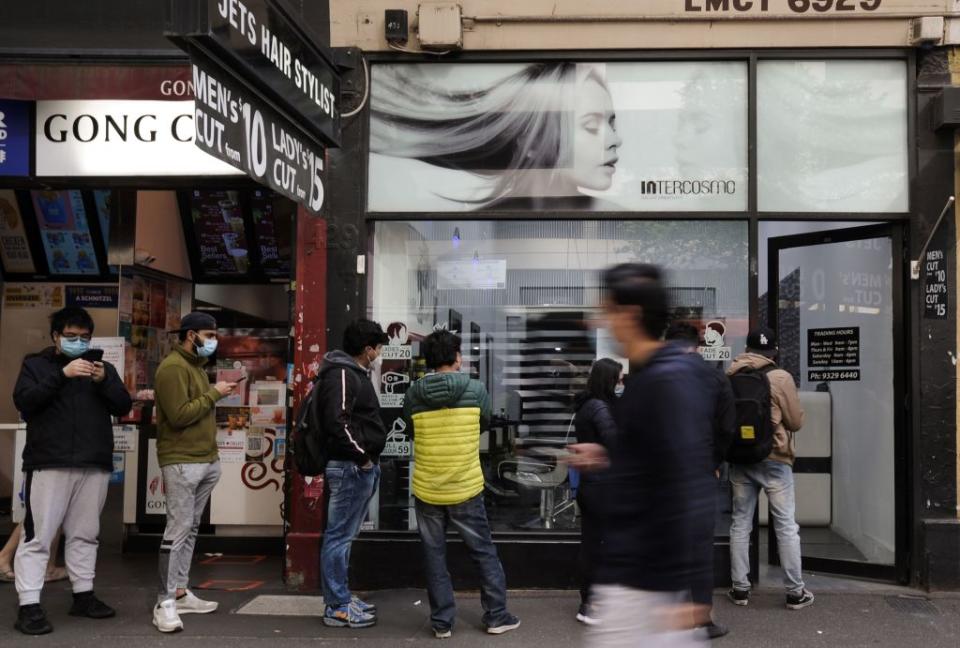Australia emerges from lockdown, but it'll be a jobless recovery

As Australia slowly opens from the Covid-19 lockdown, economic conditions will improve.
This is obvious as we all resume domestic travel, going to sporting events and other entertainment, eat at restaurants and doing ‘stuff’ that involves spending money on goods and services that were prohibited when the lockdowns were most severe.
This is all well and good, but it skirts over what is a more critical question of the speed and duration of the recovery and the extent to which we can get the economic momentum to give a job to everyone who wants one, that gets real wages rising and inflation back into the 2 to 3 per cent target range set by the Reserve Bank.
The early signs remain problematic, at best.
More from The Kouk: 'An ugly set of numbers': Jobs market could get worse
'Disconcerting': Australia’s $1 trillion debt explosion exposed
More from The Kouk: Plenty of temporary Government spending but where are the jobs?
According to the most recent payrolls data, the number of payrolls (jobs) fell 0.9 per cent in the two weeks to 3 October, bringing the level of payroll employment back to those prevailing in June and July.
The disconcerting element of this result was the broadly based decline – every state and territory registered a fall in payrolls of between 0.7 and 1.2 per cent.
The retail trade data are also showing signs of fatigue, with sales down 1.5 per cent in September after a 4.0 per cent fall in August. Like the payrolls data, there was a ‘topping out’ of sales in all States and not just Victoria.
Several of the Big Four banks are producing estimates of consumer spending based on their card and cash transfers data and these suggest that spending has been broadly flat into the middle of October.
Unemployment will keep rising
After GDP fell a record 7.2 per cent in the first half of 2020, the rebound in the second half of the year will be half-baked.
This is why Treasury and the RBA are forecasting unemployment is still to rise in the next few months and to stay high for some years.
A recovery with rising unemployment is not a recovery at all.
It will be a statistical bounce back and not much of a move that will be anywhere near having the economy at its optimal full-employment status.
Part of the problem with the recovery is in the policy pipeline. In around six months, there will be a record withdrawal of government fiscal stimulus. That’s right, the government is planning to withdraw tens of billions of dollars from the economy and in doing so is threatening to undermine the recovery.
A little noted aspect of the recent budget was the record 17.5 per cent fall in real government spending in 2021-22.
This is an extraordinary cut in economic support which is likely to impact, just when things are looking to improve.
The road ahead
In the next few months, the JobKeeper payments will cease and the level of JobSeeker will revert to near poverty levels. Other government spending will be limited notwithstanding the rhetoric of the Prime Minister Scott Morrison that the budget is all about jobs, jobs and jobs.
The data on employment, hours worked, payrolls and wages suggest the economy is still struggling.
After all, if employment is weak and unemployment elevated the economy, regardless of GDP growth or house prices, is sick.
Which brings us back to the beginning.
The labour market data for September and early October are poor. Employment remains well below pre-COVID-19 levels as is the case for hours worked.
The economy needs more stimulus, not less.
The RBA will be throwing a bit more chicken feed at the problem next week when it is likely to cut interest rates and ramp up its quantitative easing measures. Useful and in the right direction, for sure, but it will be nowhere near enough to offset the tightening in the budget which is just around the corner.
Make your money work with Yahoo Finance’s daily newsletter. Sign up here and stay on top of the latest money, economy and property news.
Follow Yahoo Finance Australia on Facebook, Twitter, Instagram and LinkedIn.

 Yahoo Finance
Yahoo Finance 